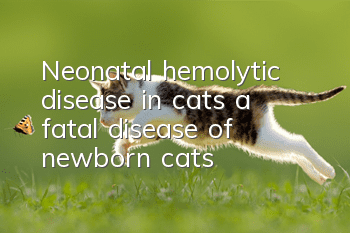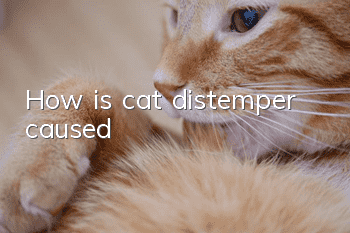Neonatal hemolytic disease in cats, a fatal disease of newborn cats!

Neonatal hemolytic disease is one of the causes of death of kittens
Neonatal hemolytic disease in cats is a fatal disease of newborn cats! We know that cats also have different blood types, and different blood types cause The antibodies and agglutinogens in the blood are different. For cats, especially purebred cats, hemolysis in newborn cats is one of the causes of death of kittens.
There are three blood types of cats: type A, type B, and type AB. Among the blood types in cats, A is the dominant factor and B is recessive. Due to the recessive characteristics of type B, the anti-type A antibody reaction in the cat's body is very strong. If a cat with type B only receives A through blood transfusion Type A blood type; or type A kittens get a large amount of maternal anti-type A antibodies from the colostrum fed by type B female cats in the first 24 hours, which will destroy the kitten’s red blood cells and cause severe blood rejection. Both will Causes severe hemolysis in the body, which can be fatal.
When a female cat with blood type B is pregnant with a fetus with type A or AB, the fetus will not be in contact with the mother’s alloantibodies, so the hemolytic symptoms of the newborn kittens mostly occur after ingesting colostrum. Most kittens will die suddenly without any clinical symptoms within the first day, but some kittens will have reddish-brown urine, or die within one week of age due to continued worsening of jaundice and severe anemia. A few kittens will die suddenly within one week of age without any clinical symptoms. Kittens that are lucky enough to survive may develop necrosis at the tip of their tail between the first and second weeks.
Clinical symptoms
Suffering cats are usually jaundiced and anemic. Due to poor blood flow to the peripheral parts of the body, the tip of the tail and the tips of the ears often become necrotic and fall off. Cats often develop dyspnea and tachycardia and hemoglobinemia, and sometimes die acutely. Clinical symptoms appear within days of birth. Diagnosis of neonatal hemolysis is often based on clinical symptoms and age.
Treatment
Prompt isolation is required, otherwise maternal antibodies will pass through the gastrointestinal tract and be absorbed by the body, causing hemolysis. However, it can be released after 3 days. go back. At this time, the gastrointestinal tract can no longer absorb antibodies. Sometimes a blood transfusion may be needed. Blood donors must be negative for feline leukemia virus and HIV. The recommended treatment is 10-20ml/kg for 4 hours, intravenously or intraosseously. The mortality rate is very high.
Prevention
To prevent this from happening, you must first identify the cat’s blood type and avoid mating between males and females with different blood types. The following provides a survey of purebred cats conducted by the University of Pennsylvania. Among them, the blood type ratios of several common purebred cats: American shorthair cats have 100% blood type A; British shorthair cats have 64% blood type A and 36% type B. There are also some cats that have type AB blood; 73% of exotic shorthair cats have type A blood and 27% have type B blood; 81% of Scottish frilled cats have type A blood and 19% have type B blood, including type AB.
In the event that the male and female blood types do not match and a kitten is born, there are two options. The first is to find an adoptive mother who matches the kitten’s blood type; the second is toArtificial feeding with goat milk powder for up to 48 hours after birth can prevent colostrum antibodies from invading the kitten's body. Because kittens only absorb antibodies in the first 18 hours. As soon as the secretion of colostrum stops, the kitten will have no problem returning to the mother cat.
Knowledge of cat blood types is only one part of cat breeding. As a responsible owner, you should clearly understand the blood type combination of your breeding breed, plus other genetic knowledge, before allowing cats to breed. , to avoid irreversible consequences.
- How to train a cat to catch mice
- The cat meows at night
- Does wearing clothes affect cats? The dangers of cats wearing clothes
- Does Garfield need help during the teething stage?
- What’s wrong with cat ear hair loss?
- Is it normal for a kitten with 25 colors of golden gradient layer to have runny eyes?
- How to tell if a cat has catnip?
- How long is a cat's memory?
- What should I do if my cat has poor appetite in summer? Tips to whet your cat's appetite!
- Things that change the color of cats’ hair and the troubles of albinism behind their good looks



